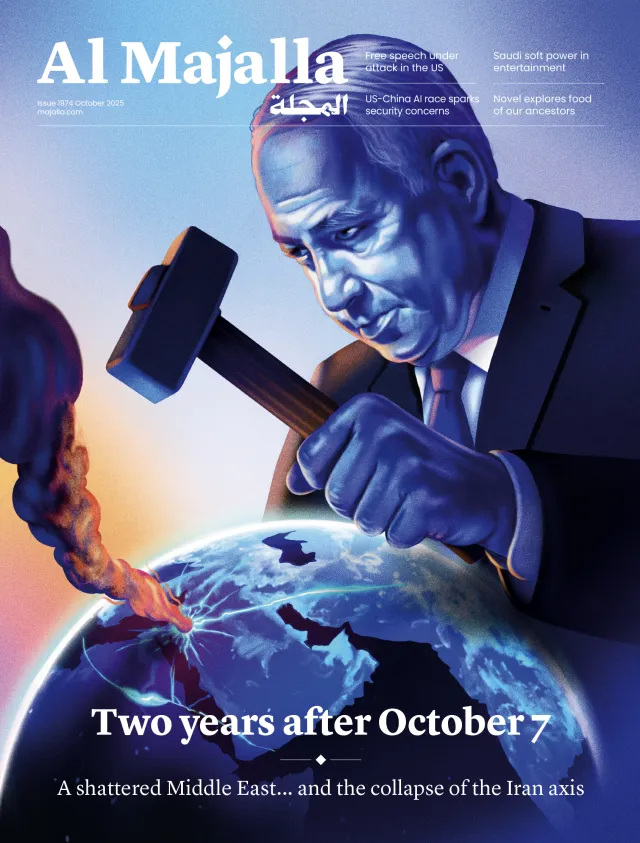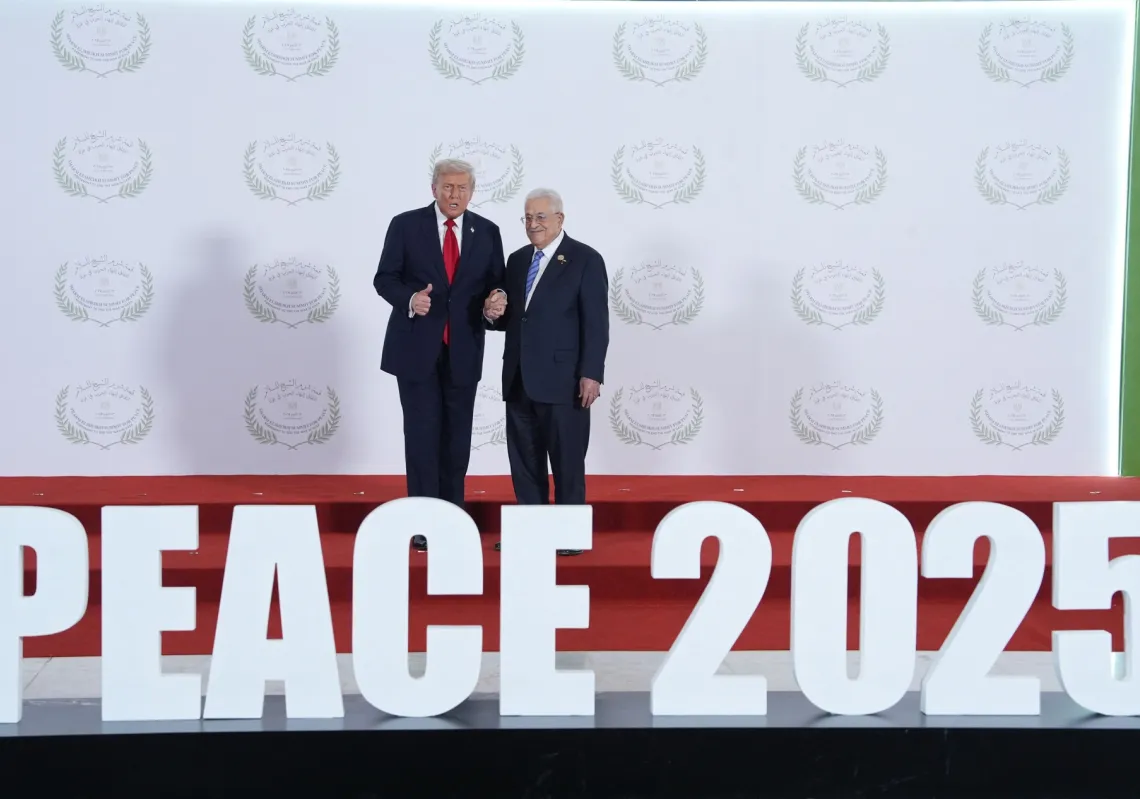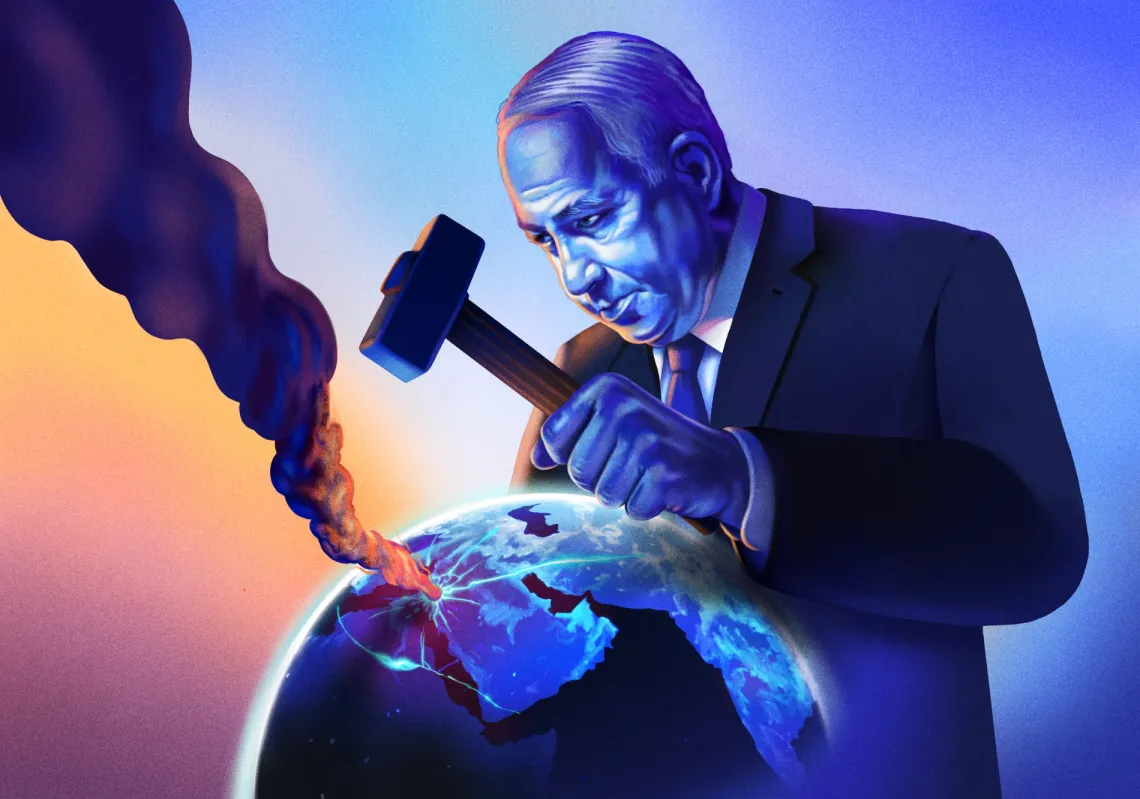Stanley Kubrick’s classic 1964 film Dr. Strangelove: Or How I Learned to Stop Worrying and Love the Bomb places some of the most morbid Cold War-era nuclear fears and attitudes under a searing satirical lens of stygian-black comedy. Released at the zenith of Cold War frigidity and paranoia, Strangelove tells the story of a rogue US general who, having apparently lost his mind, suddenly pulls the trigger on a fleet of nuclear warheads aimed at Communist Russia, threatening global extinction.
The nuclear hysteria upon which Kubrick based his satirical film has certainly died out, but many of the core nuclear fears at which Kubrick takes such deft jabs are still very much at the center of international discourse. Nowhere are they more pertinent than in Iran, where the Islamic Republic has, justifiably or not, stepped into the Soviet Union’s gargantuan shoes as the newest nuclear threat to mankind.
Strangelove in Iran
More than 40 years later, both the film and its message, are as resonant in today’s cavernous media amphitheatre as they were at the height of Cold War tensions. As global attention centers ever more intensely on Iran and its apparent push toward nuclear armament, the principle personages, as in any film or narrative structure, have gradually come into more refined relief.
And, as the line dividing media consumers from producers blurs to nearly indiscernible levels of turbidity, we all become atomized Truffauts, Kubricks, or, as the case may be, David Lynches. We read and construct media the same way any director, screenwriter, or novelist structures a narrative—namely, around easily identifiable characters and personalities.
Heads of state become leitmotif shorthand for countries, populations, and policies. Barack Obama is as synonymous with the US as Paul McCartney once was with The Beatles, as Charlton Heston was with Ben-Hur, as Rush Limbaugh will forever be with Oxycontin. We impose cinematic and literary archetypes on to political storyboards because character-driven tales are, quite simply, more exciting to read.
The Iranian political landscape may be complex and multifarious, but it’s not immune to our own storytelling devices.
Although the country’s political architecture is actually anchored by a triumvirate of theocratic, presidential and militaristic constituent regimes, the “face” of Iran, the singular personage that’s emerged as its representative actor, its foremost team captain, is, without question, President Ahmadinejad.
But what kind of character is he? Where does he fit in the current political drama that we as media consumers have constructed for ourselves? What role does he fulfill? Does he have the onscreen charisma and James Dean-like swagger to actually carry our nuclear film? Or is he more of a niche character, deigned to play a small, predictable role but do it to absolute perfection, à la Jerry Orbach?
Is he, perhaps, the Dr. Strangelove of the 21 century?
Though he makes only a handful of appearances onscreen, Kubrick’s most memorable character, by far, is the film’s namesake—the deranged (and ambiguously Nazi) scientist known only as Strangelove. In what may be the most economically brilliant performance in cinematic history, Peter Sellers brings to life a character so profoundly enigmatic, so anomalously German, and so inarguably deviant that one can’t help but be lulled into the hypnotic spider web that Sellers casts across the screen.
Granted, Strangelove is no head of state—no nation, no matter how desperate, would be that suicidal. And Sellers’ portrayal is unquestionably more demonstrative and exaggerated than anything we’ve seen from Ahmadinejad in the public sphere. But circumstantial differences aside, there remain several significant parallels.
Even though he’s technically working under the American regime, Strangelove is plainly cast as an extreme caricature of the same trigger-happy, suspiciously double-talking character that so many in 1960s America feared—the same kind of characterization, in fact, that many in the Western media have now branded upon Ahmadinejad.
But is there really a madman lurking far beneath the placid surface of Iran’s President? Has Ahmadinejad finally and inexorably stopped worrying, and learned to love the bomb?
Dr. Ahmadinejad
Everything about Ahmadinejad—the man and the fable—speaks to relative normalcy; relative, obviously, because compared to other leaders of either perceived or real nuclear threats, he comes across as, well…tame.
North Korean President Kim Jong-Il is, by most accounts, certifiably insane. Both his promethean ego and his diminutive embonpoint suggest dictatorial tendencies and inferiority complexes of the Napoleonic variety.
The man known domestically as “Dear Leader” has manicured such an absurd myth about his messianic origins that the official North Korean records describe his momentous birth on Mount Paektu as a near biblical event peppered with "flashes of light and thunder,” upon which “the iceberg in the pond of Mount Paektu emitted a mysterious sound as it broke, and bright double rainbows rose up."
When Kim Jong-Il boasts of his nuclear warhead collection, there’s indeed a measured and understandable ripple effect of concern that radiates throughout the international community. But no one’s really that surprised. After all, Dear Leader simultaneously claims, in all seriousness, to have drilled 11 holes-in-one the first time he ever picked up a golf club.
There don’t seem to be any traces of similarly inflated egomaniacal nucleotides in Ahmadinejad’s DNA. There doesn’t even appear to be much of the showmanship that has become the global calling cards of both Venezuelan president Hugo Chavez and Libya’s Muammar al-Qadaffi. Ahmadinejad’s stage presence, by comparison, is borderline soporific.
While his plaintive eyebrows and densely compact eyes render him low hanging fruit for political cartoonists, Ahmedinejad’s actual behavior, at first glance, seems downright vanilla. This is a man, after all, who ascended to high political office on the wings of plebeianism. His entire campaign was built upon the premise that he was just “one of the guys,” a man with the same blue-collar origins of the working class Iranians to whom he so openly pandered during his 2005 presidential election.
He further strengthened his populist credo and symbolically reinforced his commitment to the conservative working class by famously removing the opulent furniture in the presidential palace and replacing it with more acceptably modest pieces. His wife still packs him lunch every day. Calling his suits “modest” is like calling Rembrandt “talented.” Cut out of a martinet’s cloth, the staunchly conservative Ahmadinejad represented an orthogonal right turn from the socially moderate regimes that preceded him.
On occasion, however, Ahmadinejad has displayed curiously contradictory behavior, and has given us brief, puzzling glimpses into a more complex individual.
The same man who ushered in a new era of social conservatism is also the man who, last summer, so tirelessly stood by his initial choice for First Vice President, Esfandiar Rahim Mashaei. The move upset not only the Supreme Leader, who immediately ordered his resignation, but also irked many in his conservative base who weren’t so keen on a high elected official who’d previously been videotaped enjoying a wholly inappropriate dance performance put on by Turkish women.
Ahmadinejad, the “man of the people,” also happens to be the same man who infamously claimed that a halo-like light hovered over his head during a 2005 speech at the UN. He maintains, furthermore, that every world leader present for the speech did not blink for the entire 27-minute duration. These are hardly words you’d expect from a supposedly austere, religious conservative, or, for that matter, from a man of science with a PhD in engineering—both of which Ahmadinejad claims to be.
Despite these wrinkles, though, he continues, in speech and in public, to hold to his self-perpetuated image of normalcy. More importantly, when compared to many of the same men with whom he’s often mentioned in the same breath, he still comes across as the only relatively coherent member of the group.
For all his quirks, he’s still nowhere near as volatile (or senile?) as Kim Jong-Il. And you definitely won’t see him dressed like the veritable Austin Powers extra that Qadaffi has become.
So why is the international community so incensed over someone so relatively normal? Could it be because of this normalcy? Is the West warier of Ahmadinejad’s more calculated game of double talk and duality than they are of North Korea’s impulsive Dear Leader?
It’s a reasonable explanation; a cagey, mysterious adversary, after all, is always worthy of attention, in any forum. And a cagey, mysterious adversary with nuclear capabilities is worthy of extra attention.
But does it necessarily make him another Strangelove? Do nuclear capabilities have the transformative power to turn an otherwise sibylline world leader into a spastic, charlatan of an antagonist?
The answer, of course, depends on the fiction we construct around Ahmadinejad’s nuclear ambitions, the editing and splicing we use to piece together the story, and the creative license with which we allow ourselves to do so.
However unique each iteration may be, each auteur remains restricted to the same material, the same constituent bits of reality with which to assemble the Ahmadinejad mosaic. And only in examining each individual piece of radioactive mini-narrative can we even hope to remove the veil, and unearth the true Strangelove or Regular Joe buried underneath below.
How He Learned to Stop Worrying…and Love the Bomb?
At some point over the course of his presidency, Ahmadinejad, like the blundering characters in Strangelove, simply stopped worrying. While he hasn’t done anything as drastic as pulling the trigger on a nuclear warhead, his nuclear rhetoric has certainly become more emboldened and, at times, brazenly confrontational.
Ahmadinejad is certainly not responsible for planting the seeds of uranium enrichment in Iran, but during his time as president, they’ve blossomed like never before. After a group of exiles revealed that Iran had resumed uranium enrichment activities that had laid dormant ever since the 1979 Revolution, then-President Mohammed Khatami confirmed in 2003 that the country had been secretly working since 1985 to develop a nuclear fuel cycle, thus setting in motion the international cat and mouse game of inspections and sanctions that’s still in full swing today.
While Iran was embarrassingly forced to import gasoline in 2007 due to insufficient infrastructure to refine its abundant supply of oil, Ahmadinejad pushed full steam ahead with his nuclear program, while disclosing the details of the endeavor on a piecemeal basis to the rest of the world.
After deciding to hold a guided and highly publicized tour of the new Natanz uranium enrichment facility in April of 2008, even in the face of mounting sanctions handed down from the UN Security Council, Ahmadinejad appeared to be more contumacious than ever.
Just last month, at a ceremony celebrating the 31 anniversary of the Islamic Revolution, Ahmadinejad not only proudly declared Iran a “nuclear state,” but had some carefully articulated words for concerned Western powers, as well.
As some demonstrators in attendance shouted chants of “Death to the dictator!”, the President, from atop a flower-adorned platform, asked the West to “please pay attention and understand that the people of Iran are brave enough that if it wants to build a bomb it will clearly announce it and build it and not be afraid of you.” He went on to assert, “When we say we won’t build it that means we won’t.”
Iran has claimed, on numerous occasions, that they’ve cooperated with all of the UN inspections requirements and documentation. Inspectors, on the other hand, say they haven’t had any news from Iran since mid-2008.
According to a recently publicized February 14 report from the IAEA, Iran has now decided to move its entire stockpile of enriched nuclear fuel to an above-ground location—just a few months after claiming that they had no choice but to build an underground nuclear facility near Qum, because of the ever present threat of attack.
The anomalous move struck many as bizarre, and led to speculations that the Islamic Republic might be baiting Israel into striking the facility, as a means of unifying its suddenly divided electorate. Others, meanwhile, have hypothesized that the move was intended as yet another bold confrontation with the West, in an attempt to gain leverage in future diplomatic negotiations.
As he’s done all along, whenever the currency of clarity and forthrightness are at an all-time high, Ahmadinejad continues to sit idly by, and let the speculation foment.
Dr. Strangelove? Or Dr. Strange?
So, is Ahmadinejad today’s Strangelove? Not exactly. Does he aspire, in some way, to step into Sellers’ role of mad nuclear scientist? Not quite.
But is he as enigmatic and curiously placed as Kubrick’s zany creation? Absolutely. Then again, though, so is all of Iran.
In many ways, Ahmadinejad and his life stand as a microcosm of the current state of Iran. His persona, like Iran’s nuclear and foreign policies, is one shrouded in a miasma of mystery.
His statements are often schizophrenic and contradictory, reflective of a state caught in the vortex between the pull of religious conservatism and the ongoing push toward Western ideals of modernity.
Like Strangelove on screen, Ahmedinejad occupies a strange and peculiarly precarious space in the international political fiction we've engineered around Iran. We’re never sure how much sway Strangelove has over the US administration, and we’ll never know the extent of Ahmadinejad’s influence in Iran, either. He’s neither an absolute authority, nor a Wizard of Oz, relegated to rote, behind-the-curtain duties.
And, as with Strangelove, he’s a nearly impossible character to decode. Much as the true extent of Iran’s nuclear progress remains encased in an obscure box of arcanum, so too does the “true” character of Ahmadinejad remain blurred. As with every major politician, it’s become virtually impossible to separate the three-dimensional human from the two-dimensional image.
Even if we tried to derive a “pure” idea of Ahmadinejad’s actual intentions, we would have to disentangle the complex web of power relations that govern the Iranian presidency, the Supreme Leader, and the Supreme National Security Council. Even the most advanced econometric evidence would be hard pressed to isolate a pure “Ahmadinejad factor” in the three-headed consensus-based process that dictates Iran’s foreign policy.
As in any film, though, we, as viewers, must sacrifice some basic level of objectivity. The only clay with which we can mold a character is the raw material before us—what we see on-screen, or read across headlines. While we can certainly deduce much from Ahmadinejad’s actions, circumstantial context remains paramount. The rhetoric may be fiery, and his speeches may be hawkish, but it’s critical to place Ahmadinejad’s recent actions within the recently transformed mise-en-scene against which he’s placed.
Ahmadinejad as Wallflower
Last July, for the first time in decades, Iranian discontent coagulated and manifested itself as palpable action. Now, barely seven months removed from this rupture, Ahmadinejad’s back is pressed squarely against the wall. The Iranian regime last summer perhaps heard the ominous drone of what Roger Cohen described as “the death knell of an ossified post-revolutionary order.”
In response, the Iranian leadership has turned to the haven of uranium enrichment. In ramping up the program, and, more importantly, ramping up his promotion of the program, Ahmadinejad and his brass have made their intentions blatantly clear.
A “nuclear state,” in their eyes, is a world player. By their ratiocination, a state that “goes nuclear” against the wishes of nearly every other government is even more fiercely autonomous. Iran, like a gambler watching his chips dwindle, has now put everything on the table, and has begun chanting an interminable chorus of “Hit me!”—even as the Obamas, Sarkozys and Merkels perched around the blackjack table shake their heads.
Whether or not Iran actually plans on using enriched uranium for militaristic purposes remains unknown—perhaps even to Iran’s own leadership. By Ahmadinejad’s quasi-Buddhist philosophy, the journey seems to outweigh the destination. It seems that, for him, simply attaining, or even attempting to attain nuclear capacities might be enough of a roborant to restore a state that’s recently shown signs of frangibility.
The worry, however, is that simply building capacity won’t be enough, and that only international confrontation, induced either passively or actively, will placate an administration intent upon regaining control over its country.
Defusing the Doctor?
We probably shouldn’t spend too much time constructing doomsday endings for our Iranian film script just yet. If anything, we should take solace in the fact that we’re not dealing with a Strangelove, but simply with a man and a country that, at the moment, are at a uniquely transitory inflection point in their respective evolutionary arcs—a prolonged mid-life crisis, if you will.
Does this mean we should treat the threat of a nuclear Iran as nonchalantly as Kubrick does? No. We should, however, always keep ourselves firmly grounded in the truth serum of context, and realize that Ahmadinejad and Iran, while certainly playing up the role of defiant adolescent to the West’s solicitous parent, are not de facto dangers.
Nor should we expect to see a transparent Ahmadinejad anytime soon. Opaque intentions shielded behind a poker-faced President only raise Iran’s bargaining value at the card table of international diplomacy. Much like Peter Sellers, Iran’s president is perfectly capable of playing numerous archetypes, and of sliding seamlessly between his blue-collar “man of the people” and his authoritarian “man of The Man” roles.
At the end of Strangelove, the wheelchair bound doctor suddenly finds the will to walk, and famously exclaims, “Mein Fuhrer! I can walk!” just as the warheads zero in on Russia.
Don’t expect a similar 180 from the Iranian President.
Ahmadinejad may raise eyebrows. He’s unquestionably controversial, and eternally enigmatic. At the end of the day, though, he’s no Dr. Strangelove. He’s just another strange doctor, caught in a strange period of upheaval. When we eventually debunk the myth of “Ahmadinejad as Madman,” we’ll all be able to stop worrying, and, perhaps, begin reconsidering the “bomb” at the epicenter of our Iranian screenplay.
Amar Toor – Paris-based freelance writer and consultant at the OECD. The views expressed in this article are those of the author, and do not reflect the policy or views of the OECD.








